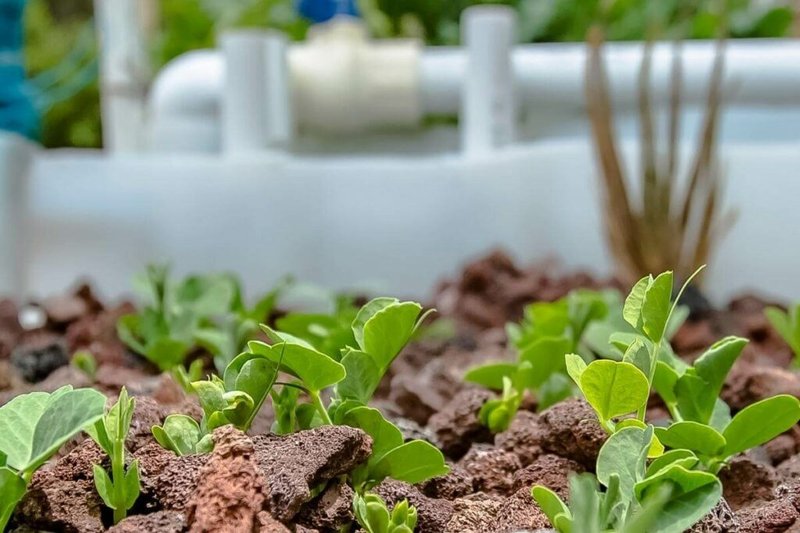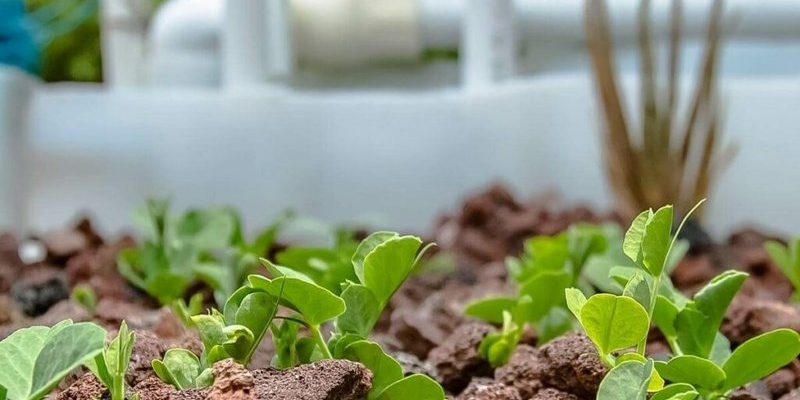
Honestly, the answer is a resounding yes! Earthworms can not only coexist with fish in an aquaponic system but can also bring a treasure trove of benefits to your garden. Think of them as the little workers scooping up nutrients and breaking down organic matter, just like a friendly crew tidying up after a big party. So, let’s dig into this fascinating topic and explore how earthworms can elevate your aquaponic setup.
Understanding Aquaponics
Aquaponics combines fish farming and plant cultivation in a way that’s not only efficient but also eco-friendly. In this system, fish waste provides organic nutrients for the plants, and the plants help filter and purify the water for the fish. It’s a neat little cycle, much like a relationship where both parties benefit from each other’s presence.
You might be wondering how it all ties together. When the fish produce waste, it’s broken down by bacteria into forms that the plants can absorb. This process creates a natural ecosystem where both fish and plants thrive. Now, where do earthworms come into play?
Think of earthworms as the champions of soil health. They break down organic material and enhance nutrient availability, which is crucial in an aquaponic setup. By adding these little creatures into the mix, you can potentially boost your system’s productivity. They munch on decomposing matter and their castings—essentially worm poop—are nutrient-rich, adding even more to your plant’s diet.
Benefits of Using Earthworms in Aquaponics
Adding earthworms to your aquaponic system can bring several benefits. Let’s break them down:
- Nutrient Cycling: Earthworms help break down organic waste more efficiently, allowing nutrients to be available for plants more quickly.
- Soil Aeration: While aquaponics doesn’t use soil in the traditional sense, having earthworms can improve the medium used for plants, making it more porous and breathable.
- Natural Fertilizer: The castings from earthworms are packed with nutrients like nitrogen, phosphorus, and potassium, which are essential for healthy plant growth.
- pH Regulation: Worm castings can help stabilize pH levels in the water, creating a more balanced environment for both plants and fish.
When you introduce earthworms, you’re not just adding a random creature to your system. They become part of a larger ecosystem, enhancing the overall health and productivity of your aquaponic garden.
How to Introduce Earthworms into Your Aquaponic System
Alright, so you’re sold on the idea of adding earthworms. But how do you go about it? Here’s a simple step-by-step guide:
1. **Choose the Right Type of Worms:** Red wigglers (Eisenia fetida) are popular for composting and are often the best choice for aquaponic systems. They thrive in organic matter and are great at breaking it down.
2. **Prepare the Environment:** Ensure that your aquaponics system has a suitable medium where earthworms can thrive. This could be anything from worm bins to beds filled with compostable materials.
3. **Add Worms Gradually:** Start with a small quantity. You can add about 500 grams (or around 1 pound) of worms for every square meter of grow bed.
4. **Monitor Conditions:** Keep an eye on moisture levels and temperature. Earthworms generally prefer a moist environment, but too much water can drown them. Aim for a balance—it’s like staying cozy in your favorite blanket without overheating!
5. **Feed Them Wisely:** Earthworms prefer decomposed organic material. You can feed them kitchen scraps like vegetable peels, but avoid anything acidic or starchy that could upset your system’s balance.
By following these steps, you’ll help the earthworms settle into their new home and start working their magic!
Common Challenges and Solutions
Even in the best setups, challenges can arise. Let’s look at some common problems you might encounter when using earthworms in your aquaponic system—and how to solve them.
1. **Overfeeding:** If you feed your worms too much, waste can build up and lead to poor water quality. To address this, pay attention to how quickly they consume their food. Start with small amounts and gradually increase if necessary.
2. **Water Quality Issues:** Earthworms are sensitive to water conditions. If the pH goes too high or low, it can affect their health. Regularly test the water and adjust as needed to keep both your fish and worms happy.
3. **Temperature Control:** Worms thrive in temperatures between 15-25°C (59-77°F). If your system gets too hot or cold, they might struggle. Ensure you’re monitoring temperatures, especially in extreme weather.
4. **Predation:** If you’re raising fish that might eat worms, keep the two separated. Use barriers to prevent fish from accessing the worms, or consider a design where they can live harmoniously without being preyed upon.
By anticipating these challenges, you can enjoy a thriving aquaponic system with happy earthworms working hard for you.
Comparing Earthworms with Other Composting Solutions
You might think, “Why earthworms? Can’t I just use regular composting for my aquaponic system?” That’s a great question! Let’s compare earthworms to other composting solutions to see why they might be the better choice.
– **Earthworms vs. Bokashi:** Bokashi is a fermentation system for composting waste quickly. While it’s effective, it requires more management and doesn’t provide the same ongoing benefit in nutrient cycling as earthworms.
– **Earthworms vs. Traditional Compost:** Traditional composting can take longer and might not provide nutrients as efficiently. Earthworms are quicker at breaking down organic matter and improving nutrient delivery for plants.
– **Earthworms vs. Mycorrhizal Fungi:** Fungi are fantastic for soil health but require a solid soil structure. In an aquaponic system, where the medium is often more structured, earthworms provide a blend of benefits that fungi alone can’t match.
In essence, while there are various composting methods, earthworms are unique in their ability to thrive in an aquaponic environment, making them a top contender for enhancing your setup.
Incorporating earthworms into your aquaponic system can be a game-changer. By nurturing this natural ally, you harness their incredible benefits—enhancing nutrient cycling, improving water quality, and even supporting your plants’ health. Just picture a mini-ecosystem where your fish and plants flourish, thanks to these hardworking little worms.
As aquaponics continues to grow in popularity, the role of earthworms could become even more significant. They represent a sustainable option in a world that’s leaning toward eco-friendly solutions. So, whether you’re a curious beginner or a seasoned aquaponics gardener, considering earthworms might just be the next step in creating a thriving, interconnected ecosystem!

